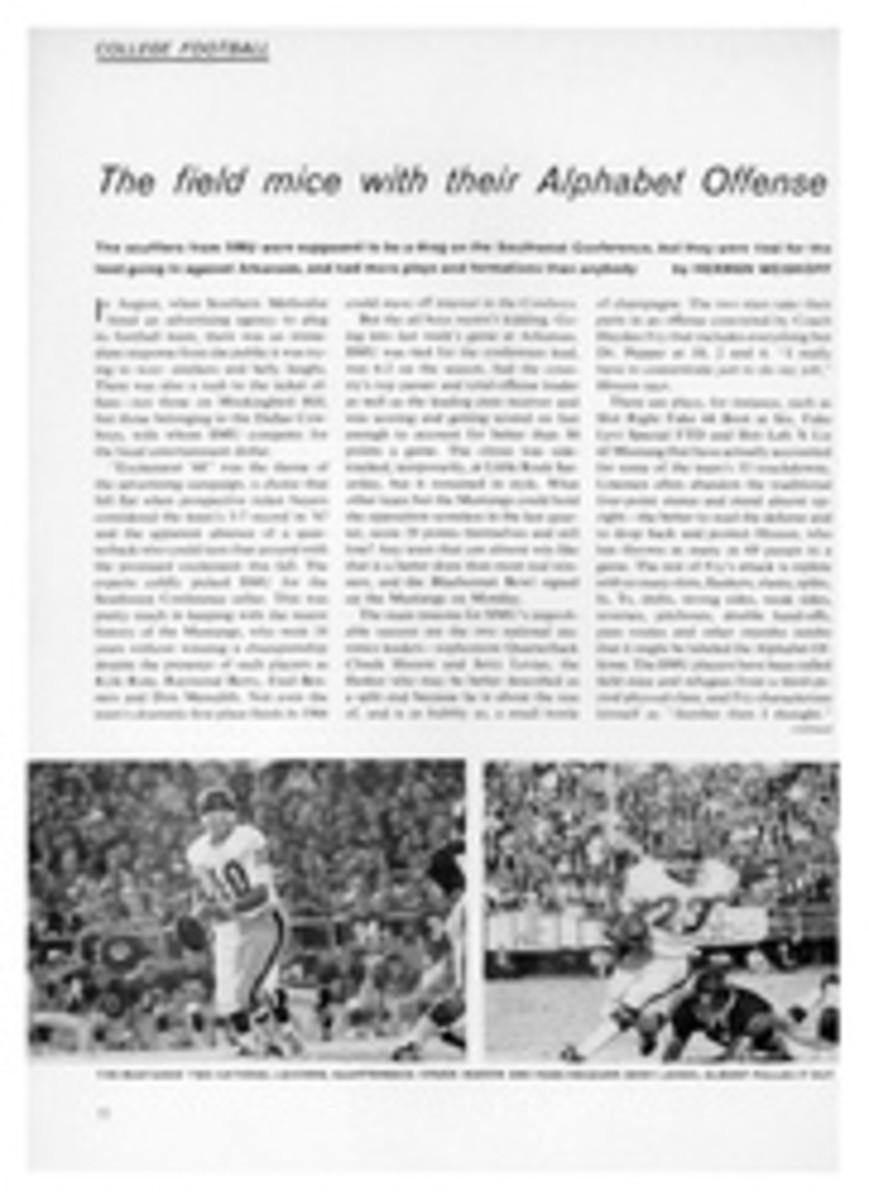
A Waterfowl Shoot in the Mississippi Delta
As the first light of a mysterious dawn shrouds the watery Louisiana Delta country, sleepy hunters disembark from their houseboat headquarters for a morning shoot. The guide is already setting his decoys, and blue geese have started moving to their daytime resting grounds (right). Many more birds will soon be flying, and for the next few hours the air will be filled with quacks, cackles and the resounding blasts of 12-gauge shotguns. On these and the following pages Francis Golden portrays some of the morning's memorable scenes.
As a guide quietly poles his boat near the blind and gets ready to put his decoys, four startled mallards leap into flight, rupturing the soft dawn.
One member of a satisfied party brings his boat to dock and lays out part of the bag from the morning's shoot.
"She got what de ducks want"
To most outlanders, the marshlands and bays of coastal Louisiana are best known for their wealth of oil, natural gas, shellfish and snakes. But Louisiana sportsmen know their country as the catch basin for North America's greatest concentrations of wintering waterfowl. Every fall millions of ducks and blue geese from the Atlantic, Mississippi and Central Flyways funnel into this vast bog. During the gunning season there is such an abundance and variety of waterfowl that a man can pick and choose his bag, cafeteria style.
If the wildfowler had to pick one chunk of this bird-rich area in which to set out his decoys, it would be the Mississippi Delta, in the southern part of Plaquemines Parish at the mouth of the Mississippi. The road ends at Venice on the west bank of the river, and the only access from there to the Delta's few private hunting camps and the public shooting blinds on the 66,000-acre Pass-a-Loutre Waterfowl Management Area is by boat or floatplane.
"There's nothing very complicated about the attractions of the Delta for ducks and geese," says Dr. Leslie L. Glasgow, director of the Louisiana Wildlife and Fisheries Commission. "For thousands of years, until man finally learned how to control it, the Mississippi frequently overflowed its banks, depositing countless tons of rich topsoil on the marshes of the lower Delta. As the river receded, this soil was dropped in the marsh ponds, creating ideal growing conditions for waterfowl food plants. Today widgeon grass grows abundantly in the brackish marsh ponds, and in the freshwater marshes—which produce the bulk of waterfowl food—there is jungle rice (millet), goose grass and delta duck potato, a nourishing tuber about the size of a thumbnail. Diving ducks like scaup and redheads do eat snails and other animal nutrients, but since most of the ducks that winter there are puddlers that feed, largely on plant material, it is just about impossible to shoot apoor-eating bird in the Delta."
If the Mississippi Delta is the most productive waterfowl marsh in North America, it is also the most precarious—the Cajuns call it la terre tremblant, the trembling ground. "In dis place, a man got to walk fast, 'cause he sink before he get de next step," says Isidore Barrois, whose accent is a blend of lilting Southern drawl and harsh Cajun (the Delta is not considered true Cajun bayou country, but many Deltans are of French descent). Isidore has spent most of his 69 years there, trapping muskrat and nutria, shooting ducks for the market and guiding visiting sportsmen. No one is more familiar with the twisting maze of waterways, the thick stands of roseau and crazy cane and the floating islands of the region.
The visiting gunner should learn to identify ducks by their local names if he wants to understand his guide. The most important wintering ducks are called by their common names—pintails and widgeon. Teal are referred to as "bumblebees" or "never-hit birds," which is easy enough. From there on it gets a bit confusing. The gadwall is called a gray duck, the mallard a French duck, the lesser scaup a black duck, the black duck a mottled duck, the greater scaup a dos gris, and so on.
Fortunately, a goose is a goose even in the Delta, and the local one is the blue, a medium-sized goose readily identifiable by its white head and neck and dark body. Nearly 75% of all the blue geese in North America make a 2,000-mile nonstop run every fall from James Bay in the Canadian Arctic to the Louisiana coast, where they spend the winter resting by day on the mud flats and grubbing out incredible amounts of duck potatoes and other succulent roots and bulbs at night. The time to shoot these plump birds is at dawn or just before sunset, when they are in flight to and from their feeding grounds. For the gunner crouching in a floating blind, the low-flying geese are easy targets—single flocks of 1,000 birds or more are common. But many a newcomer to the Delta has been so transfixed by the roar of thousands of flapping wings and the wild, high-pitched yelping of the blues that he forgets about shooting until all the birds suddenly have moved out of range.
The gunner who finds himself in such a predicament can either concentrate on ducks until the next flock of geese passes overhead or—if he has his limit—he can go fishing. The bays and passes of the Delta are full of red-fish and sea trout. Just offshore, pompano, bluefish, red snapper and cobia are caught in the shadow of oil-drilling rigs, while out in the blue water there are marlin, sailfish and tuna.
Despite the constant encroachment on the marshes by the oil and natural gas industries, the Delta continues to build up, creeping farther and farther out into the gulf every year and creating more shelter and feed for the ducks and geese. "La terre tremblant got what de ducks and de geese want," says Isidore Barrois. "And she is not easy country to make tame. I think she stay de same for a long, long time."
FIVE ILLUSTRATIONS

